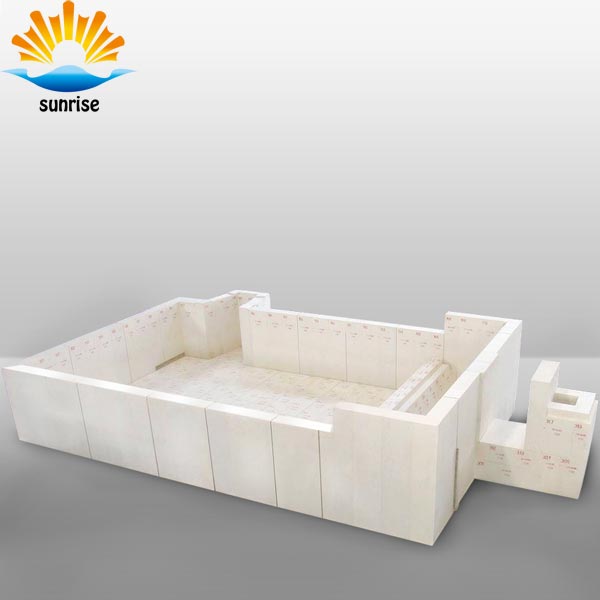Abnormal corrosion of fused cast AZS sidewalls in glass furnaces
2016-05-05
In the glass industry, when producing the same glass products in the same glass furnace with the same repair period and repair parts, the service life of the furnace can be different. The normal corrosion of refractories is within the service period designed, but the abnormal corrosion is a malignant condition in the designed service life. the recessive negative effects of these emergence conditions can not only greatly affect the economic benefits of glass enterprises, but also, to some extent, influence and restrict the healthy development of the glass industry.
1) Glass phase
The main composition of fused cast AZS includes baddeleyite, corundum and a small amount of mullite, glass phase and pores. In the manufacturing process of fused cast AZS, in order to reduce and eliminate residual thermal stress, glass phase exists as a absorber to buffer the thermal stress. However, glass phase also brings some drawbacks. It is the weak point to resist the corrosion by glass liquid. During the corrosion process, glass phase precipitates and then is replaced by the molten glass, which accelerates the corrosion to crystals. At high temperature, glass phase will extrude and release bubbles and thus pollute molten glass.
2) Carbon
Generally, fused cast AZS products produced by the reducing method have serious carburizing problems. The carbon content can be judged according to the color of section: light gray 0.03%-0.06%, off-white <0.03%, gray 0.08% - 0.18%, dark gray 0.15%-0.19%. Even products produced by the oxidizing method contain some carbon (<0.01%). The carbon exists in the form of carbide mixed with nitrides, sulfides, solid carbon and reducing gases. Under oxidizing conditions, these AZS products will release gases and cause a drop of extrudation temeprature of glass phase. When AZS bricks contain too much glass phase, glass phase will soften and extrude above 1100℃ and this will be accelerated with the increasing of temperature. Under a oxidizing atmosphere, oxygen will diffuse into the brick, react with those impurites and release gases such as CO2 and SO2. Those gases will extrude the glass phase out and form core bubbles on the surface. Withotu the binding of glass phase, crystals begin to lose.
Harmful components entering fused cast AZS during the manufacuring process
1) Sand and other impurities
For fused cast AZS blocks casted in a mold made with quartz sand and water glass, sand inclusion is common. Sand inclusion is caused by the shedding of sand on the surface of the mold during the casting process. In addition, durning the melting process, there is a program of flating materials with steel drill rods. The texture of drill rod will be softened for a long time in a high temperature melt. It may be broken when prying unmelt blocks and are likely to be melted in the melt to increase the iron content within the products or enter the products when casting.
2) Unevenness of oxidizing of fused cast AZS
The degree of oxidation of fused AZS bricks is one of the key indicators of the quality of products. In the oxygen blowing process, each manufacturer has a perfect system of requirements, but the set of the position of the oxygen lance is mostly flawed. Oxygen blowing lance clogging is an inevitable phenomenon and causes unevenness of oxidizing of fused cast AZS. There will be inconsistencies in color on a single brick.
